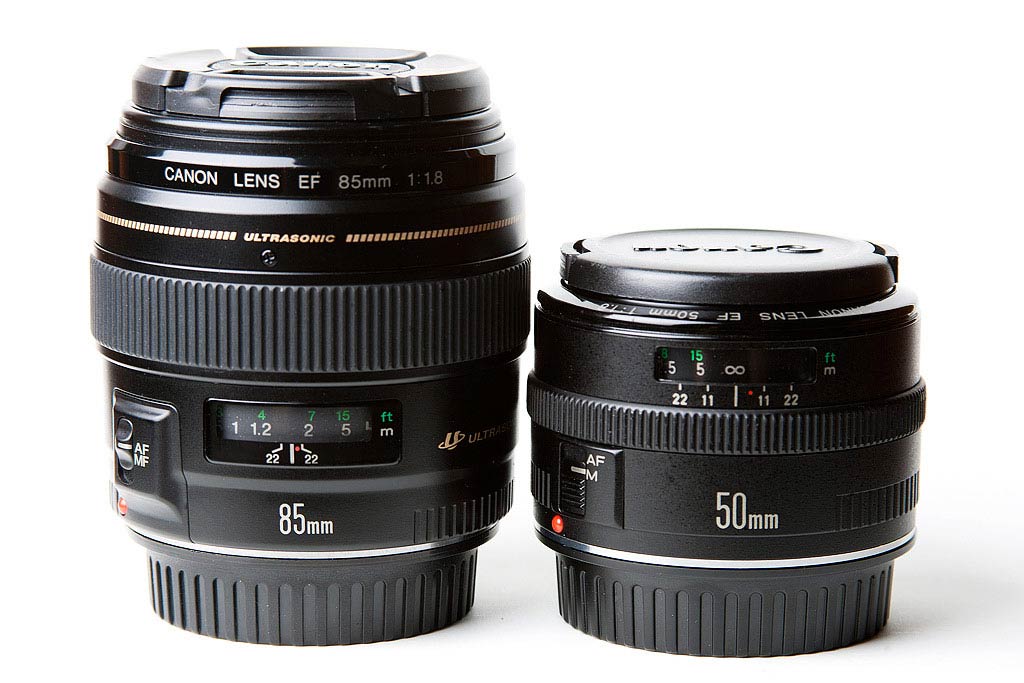
Canon 50mm f/1.8 Mark I ?
[W]hen I bought my very first auto-focus camera in 1991, a Canon EOS 10s, it shipped with a Canon EF 50mm f/1.8 II. Even at that time, the Mark I was already a thing of the past. I knew that the Mark I existed, though, and immediately started looking for one to replace my Mark II, but Ebay and Craigslist didn’t exist back then (and I didn’t even have my drivers’ license yet), which made it tricky. Why did I care?To start with, anyone who has put their hands on a 50mm f/1.8 II knows that they feel a little cheap. Maybe more than a little. The whole housing is plastic, as is the lens mount, and the focusing ring feels light and a little loose … and it’s not even rubberized.
The Mark I, on the other hand, was a very rugged little lens with a stainless steel mount, very similar in appearance to the Canon 50mm f/1.4 USM. Optically, it’s identical to the Mark II, and they both use a micro-motor instead of a USM, but they’re still pretty quick.
I never did find a Mark I, back in 1991, and I admit that after using the Mark II for a few months, I didn’t look very hard. The optical quality of the Mark II was great, and back then, I had paid only about $60 for the lens, so there wasn’t really any room for complaint. Although the price has nearly doubled, it’s still probably the best lens for your dollar on the market, and not surprisingly, it remains one of Canon’s top sellers, even after 22 years.
Both lenses have only 5 aperture blades, which means that under some circumstances, background highlights take on a pentagonal shape rather than the smoother octagonal shape produced by more expensive lenses. Some users complain that this degrades the quality of the bokeh produced by the lens, but I disagree. Although the bokeh is not as smooth as that produced by other lenses, it is unique. It has a character of its own that is obviously optical; it doesn’t look like the smooth blur that is so frequently simulated in post-processing today. In this digital age, when homogeneity is so common, something that stands out from the crowd is a welcome change, even if it is not ideal for every situation.
So, if you’re thinking about spending a little money on a 50mm f/1.8 lens but would prefer something that feels a little better in the hand than the Mark II (and you don’t mind going retro), a used Mark I is a good option to consider. They’re relatively common on Ebay (here’s a link for current listings), though they tend to sell for $160-200, compared to the $100-125 of a brand new Mark II. There, the Mark I’s price point falls nicely between the current f/1.8 and the current 50mm f/1.4, which is higher quality than the f/1.8 models and has a USM motor, but also costs about $400.
However, I’ve also recently heard stories of the 50mm f/1.8 Mark I turning up in flea markets, garage sales, pawn shops, etc, attached to antiquated film cameras like the EOS 620, selling for less than $50 (including the camera body). In fact, there’s an EOS 620 on Ebay right now that has a 50mm lens with it (might be a mark I) and two other lenses, and the bidding is less than $70. So, if you’re a bargain hunter, remember to keep your eyes open for old Canon AF lenses; many of them (including the 85mm f/1.8) are still excellent lenses today.

Photos in this article are by Nick Owensby, used with permission.



